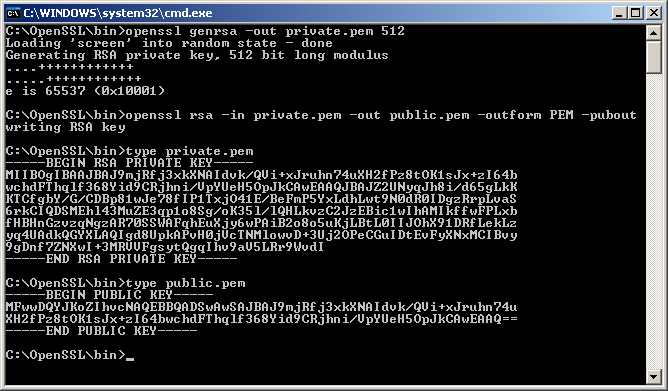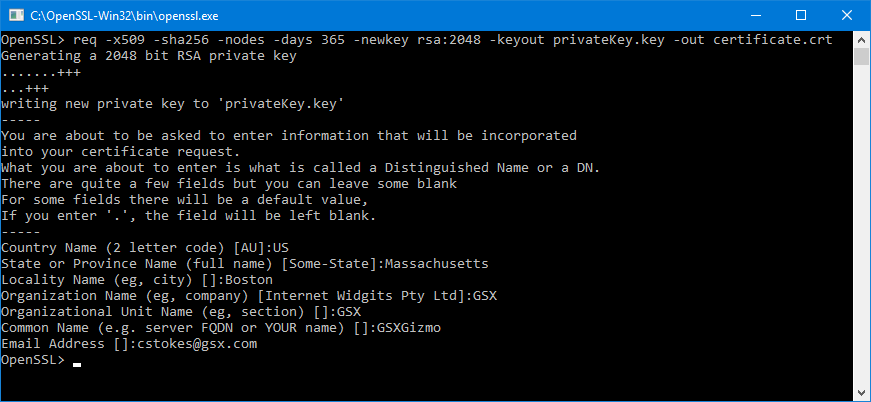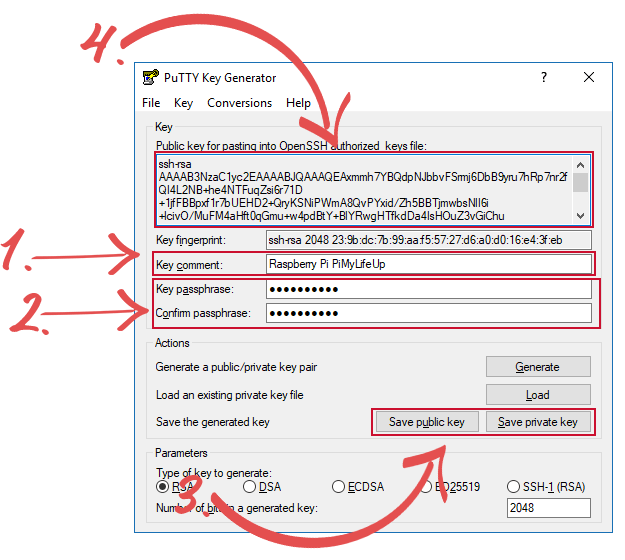Rsa Generate Key Pair C
Feb 26, 2014 It is known that RSA is a cryptosystem which is used for the security of data transmission. This tutorial introduces how to use RSA to generate a pair of public and private keys on Windows. The following code example creates a new instance of the RSA class, creating a public/private key pair, and saves the public key information to an RSAParameters structure. 'Generate a public/private key pair. Dim rsa as RSA = RSA.Create 'Save the public key information to an RSAParameters structure. Step-by-step guide on how to use the RSA Key Pair generator from mbed TLS to generate an RSA keypair. Page 2 1 To generate Rivest, Shamir, and Adelman (RSA) key pairs, use the commandinglobal configuration mode. general-keys usage-keys signature encryption label key-label exportable.
- Generate Rsa Key Pair Command
- C Generate Rsa Key Pair - Opolishigh-power
- Generate Rsa Key Pair Cisco Asa
- Rsa Generate Key Pair Calculator
This tutorial series will teach you how to use GPG in Linux terminal. I will not tell you a bunch of theory to overwhelm you. Instead, I show you quick and dirty examples to get you started, and explain the basic theory along the way.
The tutorial series is divided into 4 parts:
- Part 1: Generate Your Keypair

This is part 1 of this series. At the end of this post, you should be able to generate your own public/private keypair and a revocation certificate. This certificate is used to revoke your public/private keypair when your private key is compromised or you forget the passphrase for your private key.
GPG can be used for encryption and for signing. This software is pre-installed on most Linux distributions. Currently the stable version is GPG 2.0. I’m using the modern version GPG 2.2 on Arch Linux.
Check Your GPG Version
First Let’s check out the version of GPG on your system and some interesting tidbits. Run the following command.
As you can see, I’m using GPG 2.2.8, which is the latest version. We also know that the configuration directory is ~/.gnupg, which will hold our public/private key files. The default option file is ~/.gnupg/gpg.conf and ~/.gnupg/dirmngr.conf. It also tells us what algorithms are supported.

If you look closely, you can see that the insecure hash algorithm SHA1 is still supported in version 2.2.8 SHA1 is obsolete and you don’t want to use it to generate signature.
Create Your Public/Private Key Pair and Revocation Certificate

Use gpg --full-gen-key command to generate your key pair.
It asks you what kind of key you want. Notice there’re four options. The default is to create a RSA public/private key pair and also a RSA signing key. Let’s hit Enter to select the default.
Next it asks you the key length. The default is 2048 bits long. 1024 RSA key is obsolete. The longer 4096 RSA key will not provide more security than 2048 RSA key. So hit Enter to select the default.
After that it asks you how long the key should be valid, 2 years is fine. You can always update the expiration time later on.

Now it asks you if it’s correct. Notice that the default is No. So press y then Enter to confirm it’s correct.
And now we need to provide some user identification information for the key. This is important because this information will be included in our key. It’s one way of indicating who is owner of this key. The email address is a unique identifier for a person. You can leave Comment blank.
Select Okay.
Now it asks you to enter a passphrase to protect your private key. Enter a good and long passphrase and remember it. Because if you forget this passphrase, you won’t be able to unlock you private key.
Once you enter and confirm your passphrase. Miracast display port driver v2 windows 10. GPG will generate your keys.
It will take a while for GPG to generate your keys. So you can now do other stuff.
It took about 4 minutes on my system to generate my key pair.
This first line tells us that GPG created a unique identifier for public key. This unique identifier is in hex format. When someone wants to download you public key, they can refer to you public key via your email address or this hex value.
The third line tells us that GPG created a revocation certificate and its directory.Your should never share you private key with anyone.If you private key is compromised, you can use revocateion certificate to revoke your key. That means you tell the rest of the world that the old public key shall not be used any more.I suggest that you open this revocation certificate with your text editor to see what’s inside there.
Let’s look at the last three lines. They tell us the public key is 2048 bits using RSA algorithm. The public key ID 4F0BDACC matchs the last 8 bits of key fingerprint. The key fingerprint is a hash of your public key.
It also lists our user ID information: your name and your email address. And it also indicates the subkey which is 2048 bits using RSA algorithm and the unique identifier of the subkey.
Now you can find that there are two files created under ~/.gnupg/private-keys-v1.d/ directory. These two files are binary files with .key extension.
Export Your Public Key
Others need your public key to send encrypted message to you and only your private key can decrypt it. Use the following command to export your public key. --armor option means that the output is ASCII armored. The default is to create the binary OpenPGP format. user-id is your email address.
Generate Rsa Key Pair Command
The exported public key is written to pubkey.asc file.
C Generate Rsa Key Pair - Opolishigh-power

Generate Rsa Key Pair Cisco Asa
Export Your Private Key
Issue the following command to export your private key.
The exported key is written to privkey.asc file.
Protect Your Private Key and Revocation Certificate
Rsa Generate Key Pair Calculator
Your private key should be kept in a safe place, like an encrypted flash drive. Treat it like your house key. Only you can have it and don’t lose it. And you must remember your passphrase, otherwise you can’t unlock your private key.
You should also protect your revocation certificate. If others have your revocation certificate, they can immediately revoke your public/private keypair and generate a fake public/priavte keypair.
In part 2 we will look at how to encrypt message with your public key and how to decrypt it with your private key. Take care!